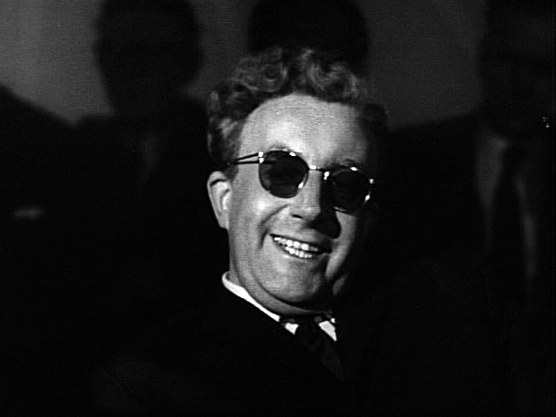Tai Young-Taft
Game Theory and the Logic of Nuclear Play
Tai Young-Taft
Peter Sellers as Dr. Strangelove from Stanley Kubrick's 1964 film Dr. Strangelove (wikimedia)
Game theory is a theoretical orientation towards the solution of strategic interaction problems that grew up around World War II. In it a number of players are indicated, their possible plays, and payoffs for each given what all players play.
In order to solve the game for rational action a solution concept is required that specifies conditions under which the game is said to be solved.
Game theory came to be the dominant modeling paradigm of evolutionary biology in which, in general, phenotypic features compete with each other for dominance in an organism’s make up, relative to its ecosystemic niche. Here, games are repeated over time, and phenotypic features are replicated in a population relative to their status over the course of repeated play.
In this context it was made apparent that not bluffing is a core principle, as if you do you will be known to be non-credible, and in repeated play an opponent will use that against you.
Another outcome is that ‘tit-for-tat’ play - that is, see what the other person did and repeat it - is generally evolutionarily dominant. The reason for this may be that cooperating and not harming others incentivizes them to not harm and help you, while not cooperating and harming may induce the opposite, with relevant evolutionarily gains.
In the context of nuclear play, that is, threat and/or deterrence of use of nuclear armament, these principles are important to keep in mind. Additionally, as the stakes get higher the payoffs associated with not bluffing do as well. In particular, using nuclear weapons or their credible threat of use may induce retaliation; in the context of not bluffing, this may lead to pre-emptive use. Additionally, as arming one’s self and placing nuclear armaments within sailable range of adversaries constitutes a threat, this may lead to nuclear build up and/or war.
With stakes as high as they are, game theory indicates logic of nuclear play must take into consideration that an opponent will play tit-for-tat, not bluff, and presume players in general are not bluffing. Additionally, rational play indicates disarmament and de-escalation, as for a given level of play, one might induce tit-for-tat strategy towards a non-confrontational level. Tai Young-Taft is a Research Scholar at the Levy Economics Institute of Bard College (Annandale-on-Hudson, NY, USA).
Tai Young-Taft is a Research Scholar at the Levy Economics Institute of Bard College (Annandale-on-Hudson, NY, USA).

